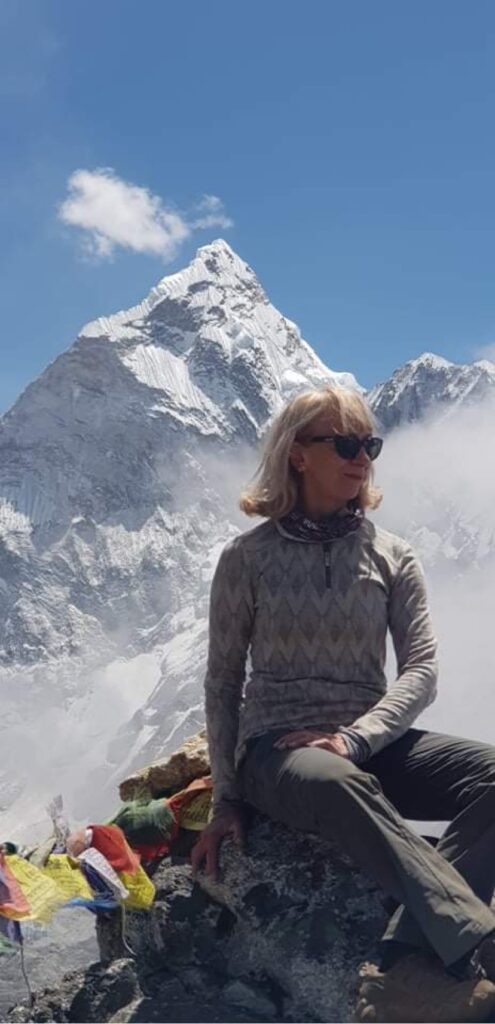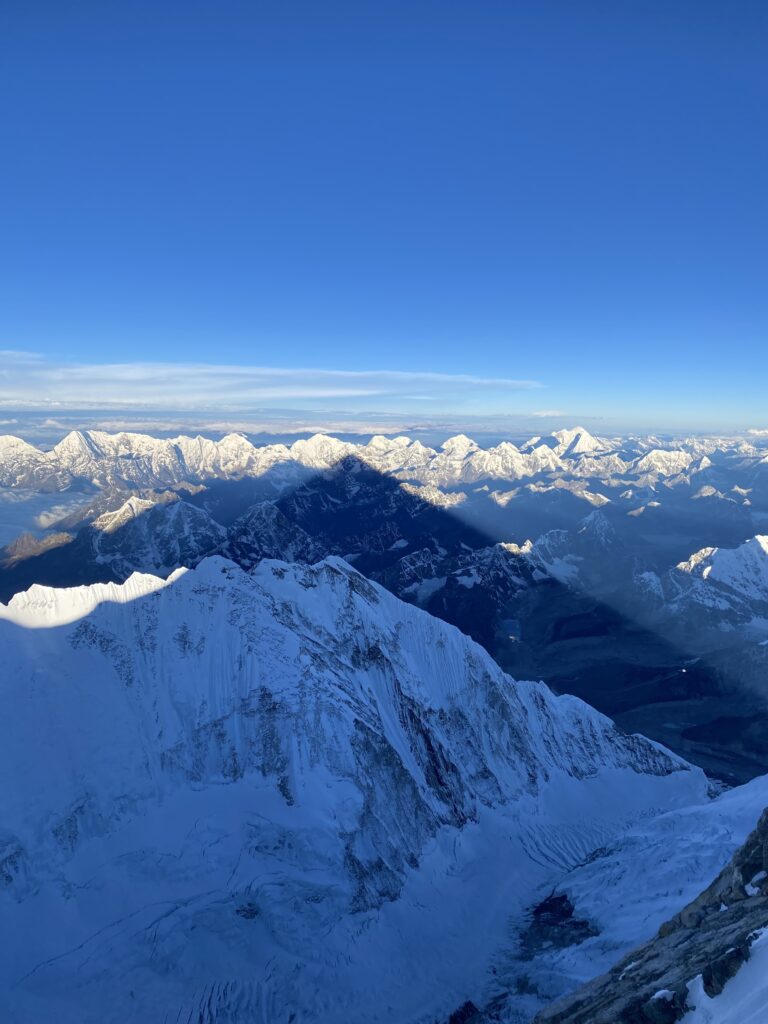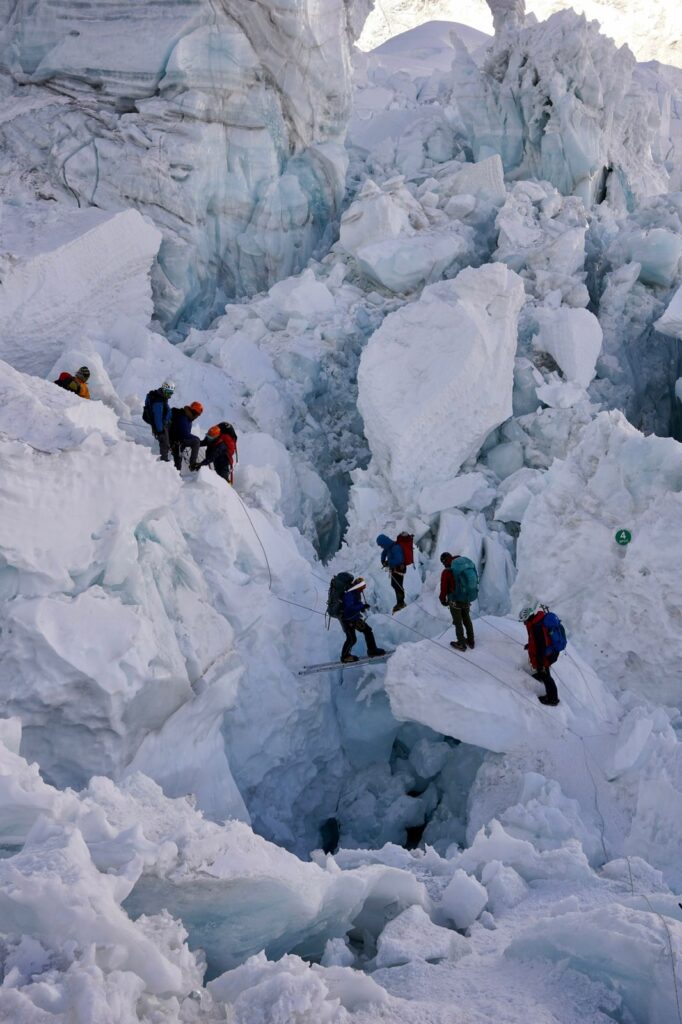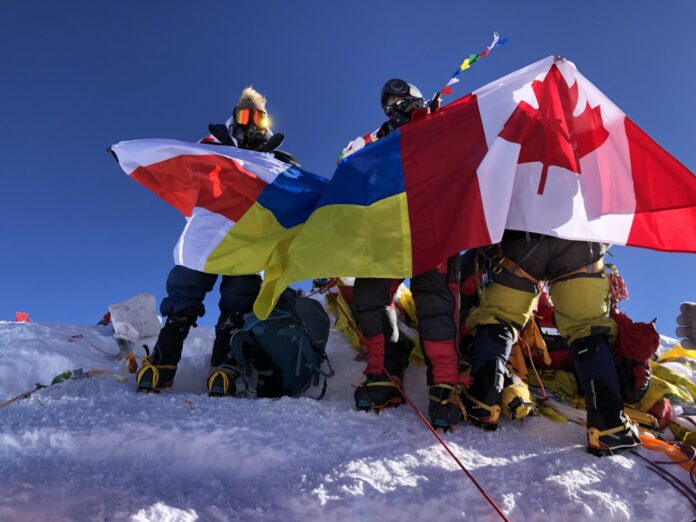It was third time a charm for Highlands resident Liliya Ianovskaia, who last month made history by becoming the oldest Canadian woman to conquer Mount Everest.
The 62-year-old mother of three took several weeks to scale the mountain, the highest point on earth, completing a lifelong dream to reach Everest’s summit.
Her adventure was notable too in that she shared it with one of her daughters, Dasha, the pair becoming only the second mother-daughter duo to make a successful climb. Now back in Canada, Ianovskaia said it was the experience of a lifetime. “The peak of Everest is very special.
While on final approach, it really dawned on me that there was nothing taller in the world. I felt it with every fibre of my being,” Ianovskaia said.
That final approach was years in the making. Ianovskaia dreamed of tackling the beast as far back as 2010, when she first took up mountaineering.
Having had experience rock climbing and ice climbing around the Highlands – with her favourite spots being around Kushog, Raven, Sherbourne and Oxtongue lakes – Ianovskaia found herself yearning for more.

After a few months training, she set out to climb her first mountain, Kilimanjaro in Tanzania. Africa’s highest mountain, its peak sat 5,895 metres above sea level. A challenge, for sure, Ianovskaia reflects, but that only fueled her desire to chase bigger, more demanding summits. Over the next few years, she would successfully manoeuvre almost a dozen peaks in Europe, North America and South America, including the Matterhorn in Switzerland (4,478 metres), Pico de Arizaba, Mexico (5,636 metres), and Illimani, Bolivia (6,438 metres).
Having mastered the Andes and Alps mountain ranges, Ianovskaia turned her attention to the grandaddy of them all – the Himalayas.
“It took me years of training and preparation for that fleeting moment at the top of the world. For me, it was all worth it.”
Liliya Ianovskaia
In 2018, she and Dasha climbed Ama Dablam in Nepal (6,812 metres), and then, the following year, tackled their first “eight-thousander”, Cho Oyu (8,201 metres), the world’s sixth largest mountain. It was during that Cho Oyu climb that Ianovskaia realized she could conquer Everest. After returning home, she immediately went about planning her excursion. She was to leave in March 2020, but days before her departure the World Health Organization declared a global pandemic and the trip was cancelled.
She spent more than a year training, pushing her body to new limits in the hopes that, when she finally made it to Base Camp, she would have it within her to reach Everest’s summit. Ianovskaia made the trip to Nepal alone in 2021.
While waiting out the weather at Base Camp, she contracted COVID19 and had to be evacuated. She spent 10 days in quarantine before returning home disappointed. Rather than admit defeat, Ianovskaia wanted to give it one more shot. In March, she and Dasha made the trip to Base Camp.

On May 14, at 6:20 a.m. local time, they reached the top of the world. “We spent about half an hour at the summit, taking in the moment. There was nothing around but snow, and nothing but clouds and countless mountain peaks below.
“Everest casts a peculiar shadow that has the shape of a perfect pyramid – it was breathtakingly beautiful,” Ianovskaia said. “Somewhere down and to the left of us, there was a large storm happening. We watched it pass, hundreds of tiny lightning strikes passed down below. It was unbelievable.”
The duo flew a conjoined flag at the peak, representing Canada, their home, Belarus, their place of birth, and Ukraine, to show support for the crisis occurring in Europe.

Having returned home May 21, one would have forgiven Ianovskaia for taking a break. Instead, she has already planned her next ascent – K2 in Pakistan.
She leaves later this month. While it took a great amount of training for Ianovskaia to get to the point where she felt comfortable challenging Everest, she firmly believes it’s a task any climber can complete.
“Be courageous and follow your passions, but be realistic about it,” Ianovskaia said, noting that on top of the physical demands, the cost to climb Everest is also substantial. The required permits alone run approximately $11,000 and once flights, equipment and guides have been paid for, it’s not unusual for a single climb to run in the region of $30,000 to $40,000.
“It took me years of training and preparation for that fleeting moment at the top of the world,” she added. “For me, it was all worth it.”





